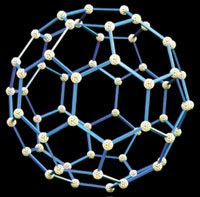What do nanotubes look like?
Images Top to bottom: carbon nanotubes, a colored image of a nanotube, a ‘buckyball’


 Year 9 have been researching the current applications of nanotubes and other areas of nanotechnology - the science of building machines at sub-atomic level.
Year 9 have been researching the current applications of nanotubes and other areas of nanotechnology - the science of building machines at sub-atomic level.


 Year 9 have been researching the current applications of nanotubes and other areas of nanotechnology - the science of building machines at sub-atomic level.
Year 9 have been researching the current applications of nanotubes and other areas of nanotechnology - the science of building machines at sub-atomic level.

Scott Heng, Paul Wong, Scott Lim and Qin Yi researched the most recent applications of nano-tubes and discovered that they are 50 times stronger than steel and are currently being developed as molecular sized wires in electronic circuitry. They explained how these molecular sized nano-wires are currently being developed to produce miniature gadgets.


Maria, Antonia and Nicole discovered that a microscopic layer of titanium dioxide (so thin it is invisible) is being used to coat clothing. This titanium oxide reacts with oxygen, creating a chain reaction that eventually results in the removal of dirt particles without washing. As the girls pointed out ‘great for busy people who don’t have time to clean!’

Anthony, Yuan Min and Ian researched the use of nano-sized particles of zinc oxide in sunscreen. Zinc oxide has been used as sunblock for many years, though, it has never become popular as it forms thick white patches on the skin. Scientists have discovered that if zinc oxide is particles are arranged in a single nano-sized layer, it is does not scatter visible light and becomes transparent, preventing the formation of an unsightly white layer .
Mrs Kitchener
No comments:
Post a Comment